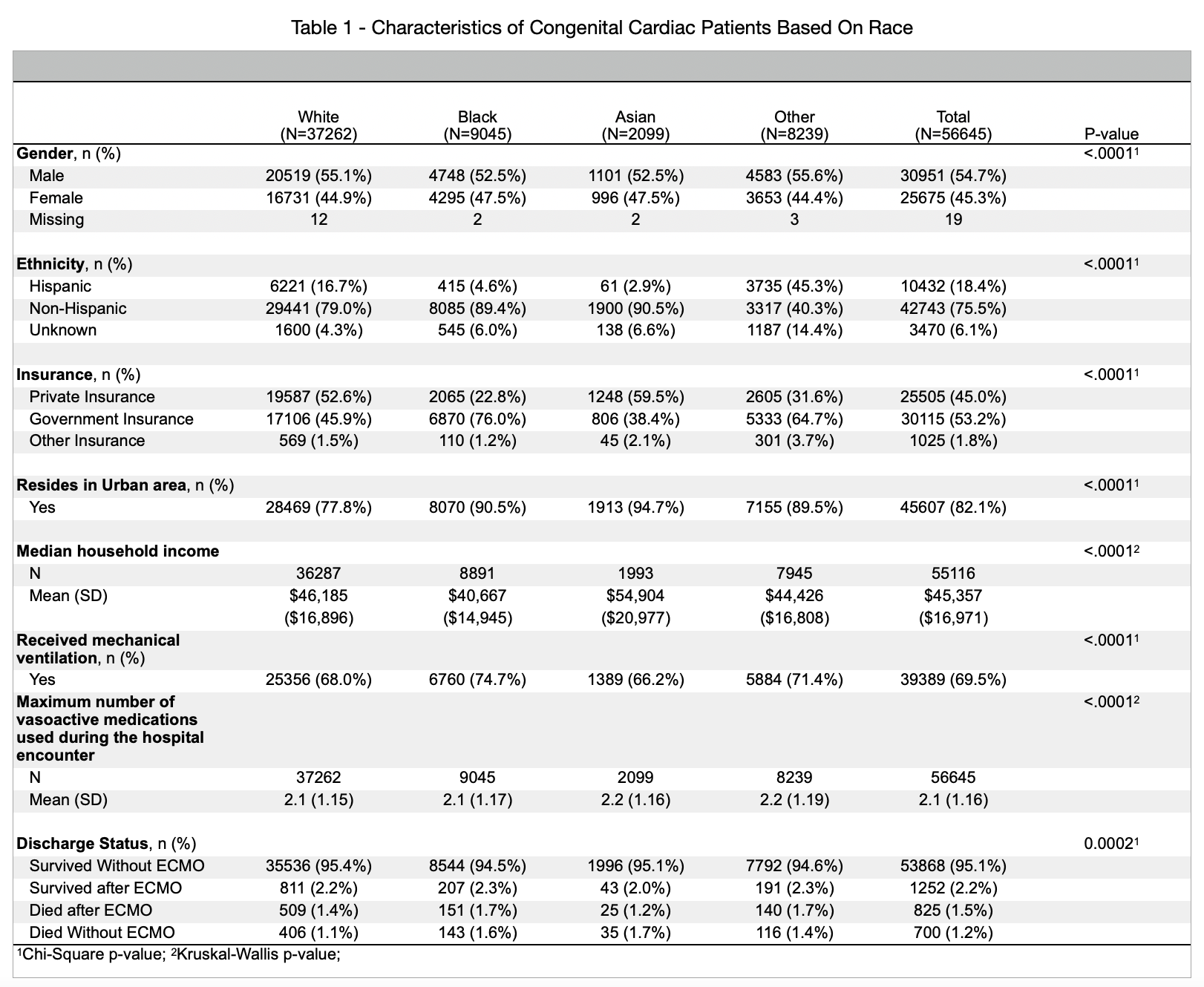Critical Care
Critical Care 2
308 - Assessing Trends in Racial Disparities in Discharge Status Following Congenital Cardiac Surgery
Publication Number: 308.205

Jatinder K. Dhami, MD (she/her/hers)
Pediatric Critical Care Fellow
Riley Hospital for Children at Indiana University Health
Indianapolis, Indiana, United States
Presenting Author(s)
Background:
Racial and ethnic disparities in healthcare affect the care of critically ill children. Previous research shows that non-white children are at increased odds for mortality following cardiac surgical intervention and variations in extracorporeal life support (ECMO) usage post operatively. This study sought to assess if racial disparities still exist in a contemporary cohort of pediatric cardiac patients.
Objective:
We hypothesized that despite an increase in medical literature regarding healthcare disparities, there has been no improvement in a contemporary cohort. Specifically, we sought to evaluate the impact of race on discharge status in pediatric congenital heart surgery patients.
Design/Methods:
Data were obtained from the Pediatric Health Information Systems (PHIS) database. Those <18 years, admitted to a PHIS contributing hospital who underwent a congenital cardiac surgical procedure from October 1, 2015 to December 31, 2021 were included. Patients were excluded if ECMO was used prior to cardiac surgical procedure or if there was an inability to establish time of surgical intervention. Race, ethnicity, insurance status, and median household income were obtained and used as factors of social determinants of health. Patients were categorized by race (white, black, Asian, and other) and each race was further divided by ethnicity (non-Hispanic vs Hispanic). The primary outcome was discharge status (defined as survived without ECMO, survived after ECMO, died after ECMO or died without ECMO).
Results:
We found a significant difference in discharge status between racial categories with the best survival being in white patients (see Table 1, p value of 0.0002). There were also statistically significant differences in need for mechanical ventilation and maximum vasoactive use between the racial categories (p = < 0.001 for both). In terms of social determinants of health, there was statistically significant difference in having government insurance (p = < 0.001), coming from urban neighborhoods (p = < 0.001), and median household income (p = < 0.001) between the different racial groups. Given these significant differences, we will control for these in future analysis to determine the impact of social determinants of health on hospital discharge status along with race.
Conclusion(s):
Despite previous efforts to identify racial disparities, we still identified disparities in children post-cardiac surgery. In this contemporary cohort, there continues to be a significant difference in discharge status based on racial categories.
